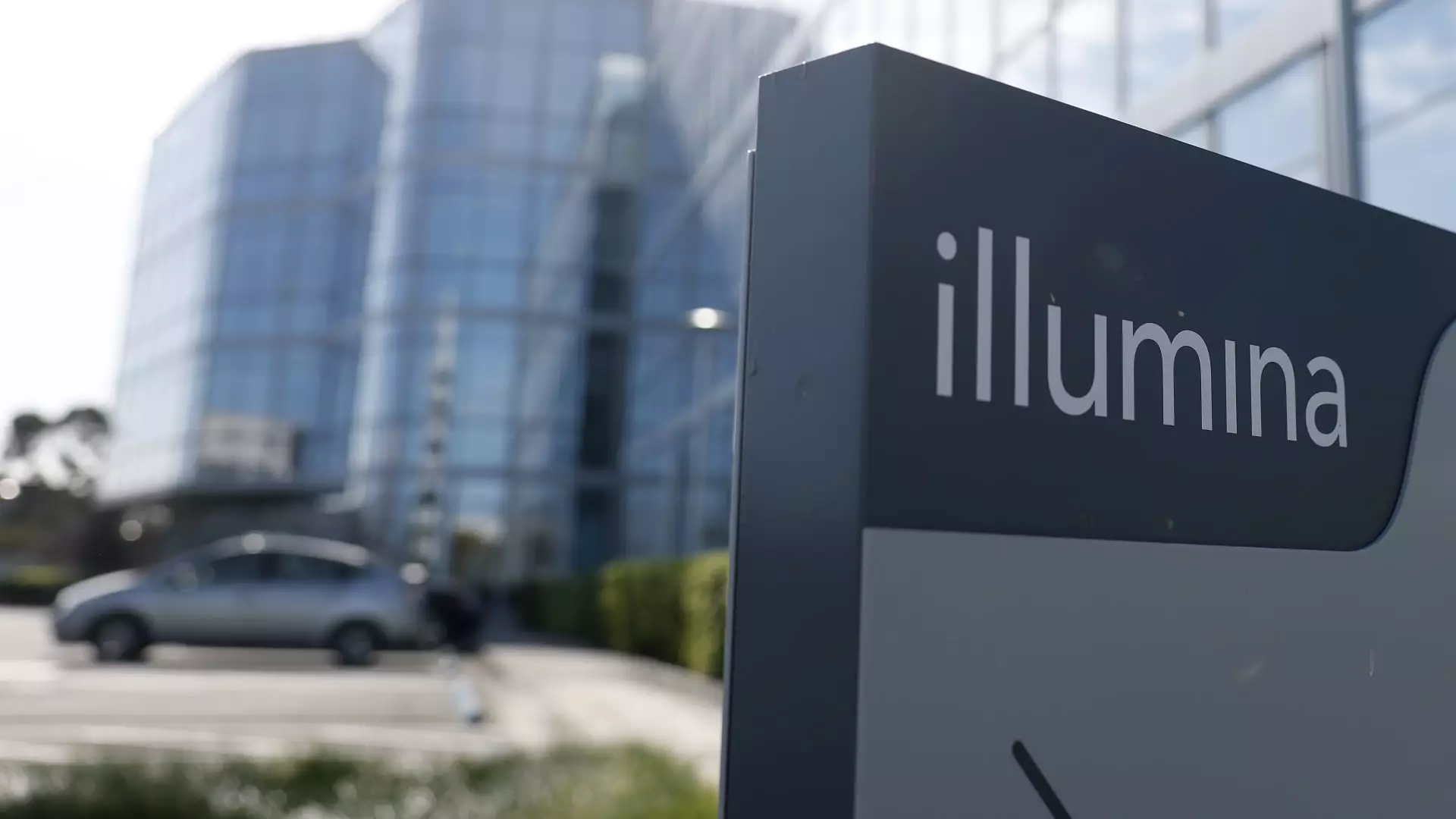In the ever-evolving field of biotechnology, few stories capture the dichotomy of triumph and tragedy quite like that of Illumina. Once celebrated as a titan in the genomic analysis landscape, the company now stands at a disheartening valuation of $12.67 billion, a staggering drop from its peak of $70 billion in just a few years. Such volatility begs a deeper examination of the myriad strategic missteps, market fluctuations, and broader economic factors that have contributed to Illumina’s fall from grace.
Illumina’s remarkable journey in sequencing technology saw accelerated growth during the COVID-19 pandemic, fueled by an urgent demand for genomic solutions. Revenue soared from $3.2 billion in 2020 to $4.5 billion in 2021, a tremendous increase of approximately 40%. These numbers showcased an inherent demand for Illumina’s revolutionary sequencing machines and consumables. However, as the dust settled post-pandemic, the company found itself grappling with dwindling sales and criticisms over its perceived miscalculations in expanding its business model.
Grail: A Cautionary Tale of Ambitious Overreach
Much of Illumina’s current predicament can be traced back to its turbulent relationship with Grail, a company it established in 2015 to revolutionize early cancer detection through multi-cancer early detection (MCED) tests. Initially spun off in 2016 with a 20% stake retained, Illumina’s ambitious decision to reacquire Grail for $8 billion in 2020 rapidly became its Achilles’ heel. Stubbornly persisting with the acquisition despite mounting regulatory concerns, the company faced a backlash from the Federal Trade Commission and European Union, culminating in the deal being ultimately blocked.
This relentless pursuit of Grail not only angered regulatory bodies but also served as a distraction from Illumina’s core business. Instead of solidifying its position as a leader in genomic solutions, Illumina doppelgangered its resources into navigating regulatory mazes, spiraling down a rabbit hole that significantly undermined its market credibility. If this saga illustrates anything, it is the perilous consequences of unyielding ambition without an awareness of external pressures and repercussions.
Leadership Overhaul: A Reflexive Reaction to Failure
In the wake of these missteps, Illumina has attempted significant leadership changes in an effort to restore investor confidence and drive growth. The recent addition of Keith Meister—an emblematic figure of strategic activism due to his role at Corvex Management—onto the board signals a shift towards a governance model that integrates shareholder interests more substantially. Yet, while appointing seasoned investors to the board seems prudent, it raises questions about the capacity of these appointments to effectuate real, meaningful change amidst the backdrop of an extremely challenging market.
Illumina’s management shakeup isn’t merely a cosmetic adjustment; it reflects broader, systemic issues that necessitate a strategic pivot. Despite controlling over 80% of the global sequencing market and boasting an installed base of 20,000 machines, the persistent drop in stock price from a high of $511 in August 2021 to a current value of $80 speaks volumes about market perceptions and investor sentiment. The razor-and-blade business model may yield robust profit margins, yet the company’s reliance on a declining product lifecycle raises alarms.
Market Forces and Geopolitical Dilemmas: A Storm of Challenges
Compounding Illumina’s challenges are geopolitical dynamics that have ruffled its international operations. The company’s struggles to establish a foothold in markets like Russia and China have resulted in a loss of growth revenue potential. Such geopolitical pressures are especially detrimental in a sector where collaboration and partnerships are essential for expansive technological advancement. As countries increasingly wield regulatory powers to either stifle or promote biotechnological innovations, Illumina finds itself trapped in an increasingly complex web of restrictions and challenges.
Additionally, uncertainty surrounding funding for pivotal government institutions, particularly the National Institutes of Health, has cast a shadow over future research and development initiatives. In an industry that thrives on innovation and progress, this kind of government volatility not only breeds trepidation but directly undermines future investments and market trust.
Where Does Illumina Go From Here?
The road ahead for Illumina seems fraught with obstacles, yet it’s essential to acknowledge that its past has not completely defined its future. While the Convoluted Grail story serves as a potent reminder that ambition unchecked can be a double-edged sword, there remains hope that the company can recalibrate by establishing a clear focus on innovation, simplifying its operational strategy, and fostering valuable partnerships that could rekindle investor optimism.
Ultimately, whether Illumina can reconcile its rich legacy with the current market realities will depend on how adeptly it navigates both its internal and external challenges. The resilience of its new leadership and board will undoubtedly play a pivotal role in defining the next chapter of this once-celebrated giant in genomic analysis.

